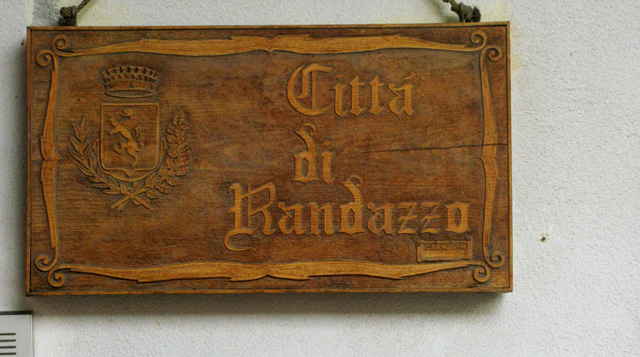
“Oh my god, Kate! Get down here. You have to see this …”
Kate and I are in Randazzo. We’d only intended to be here for an hour to grab some lunch and then head on, but we got distracted by gelato and missed the train. The last one for four hours. I stomp to the nearest bench and throw myself onto it in a grump. The clouds have come down, it’s spotting with rain, and it’s the dead time in the middle of the day when nothing’s open. I sit and seethe. A small voice sounds from beside me. “Well, I s’pose we could go back into town and have a look at the natural science museum?” I stand up. “Good idea. Right. Let’s go.” I set off at a quick march, shaking myself for being a bitch. It’s not Kate’s fault we missed the train: she might have suggested gelato, but I was more than happy to go along with the idea. We walk in silence.
“There’s a museum of natural science, with lots of fascinating things preserved and on display. If you go and book at this lovely restaurant – wait, I’ll give you a card – *this* lovely restaurant, you can walk back via the municipal buildings, which used to be a convent. Have you seen the Duomo, built entirely of lavic stone? And the Chiesa di San Nicolò and the street of arches? It’s just down there on the right. Oh! And there’s the archaeological museum, where they’ve got a nice display of Sicilian puppets. It used to be a castle and a prison. Here, take this map.”
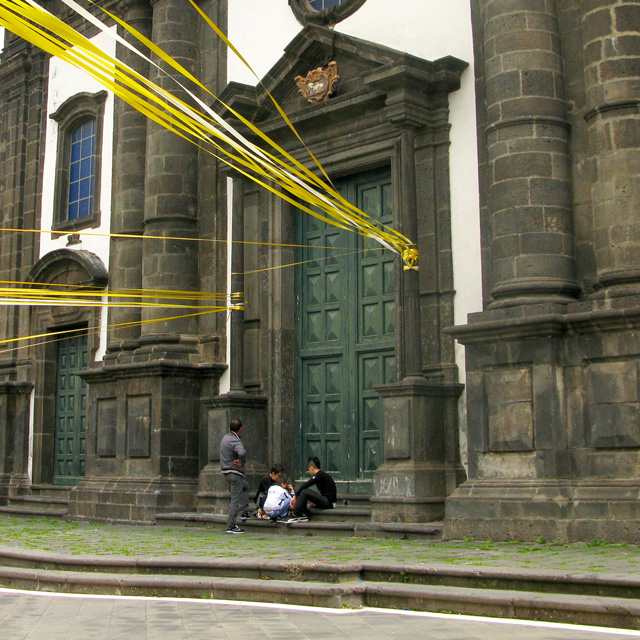
My bad mood is back. The signs that told us the science museum was THIS way lead nowhere, and the map that we were given by the nice lady in the tourist office (now closed for lunch) isn’t much help, as it doesn’t correspond the carefully numbered dots on the map to the descriptions, and the descriptions don’t give addresses. Kate and I slouch on the steps outside the Chiesa di San Nicolò, glaring with hatred at the fluttering yellow ribbons running between the church door and the lamp-posts. They seemed so pretty when we first passed by. Funny what the prospect of staring at even the sweetest things for three and three quarter hours in the cold can do for perception. Even the church is closed. I wonder out loud what idiot decided to program the tourist train this way, so that people get to Randazzo at the lunchtime break when nothing’s open. As I do so, I realise: it’s not a tourist train at all. It’s a commuter one. It’s programmed that way so that people get home for lunch with their families and can then get back to work in the afternoon. Sure, the route that it takes around the base of Etna affords plenty of spectacular viewpoints of the mountain, but that’s not why it’s there. I shut my mouth.
“Let’s walk along Via Umberto and see if we can find the archaeological museum,” says Kate in a voice that sounds like it’s trying to be decisive but not quite managing it. She stands up and starts to walk – along the wrong road. I fold up my map and follow her. We’ve got three and a half hours to kill. Getting lost might make it go faster and, as the saying goes: bad decisions make good stories.
We come out in a pretty piazza which makes me think of occupied France. It’s the trees that do it. That and the church of San Martino in the centre, which looms over it all with monochrome foreboding. We’ve found the archaeological museum at least, in a crenellated tower which is all that remains of a once much bigger castle – but the door is firmly closed and the sign on it says that it doesn’t open for another hour. We sit on a stone bench and stare at the church. I comment on the Norman arches of the clock tower with their black and white patterned stones. Kate tilts her head to the side. “It’s a bit skewiff, innit?” We sit in silence, leaning in synchronicity, vacant.
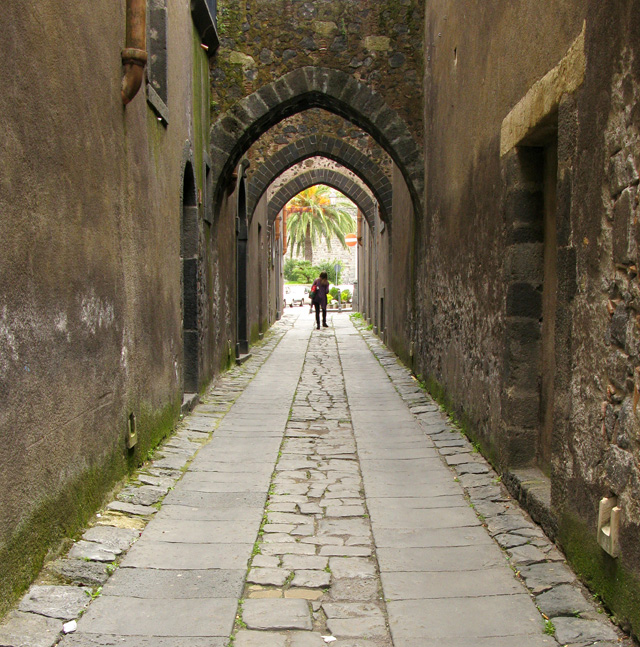
“This tower is all that’s left of the castle. During the second world war, Randazzo was a strategic communication point, so it was occupied by the Germans. The Allies therefore bombed it, even after the Germans had left. They thought there were still troops here. There weren’t.”
A scruffy yellow dog passes behind us, claws tapping on the stone as he trots past. He’s long and low like a dachshund but has the bearded, wiry hairiness of a blonde border terrier. He circles around the backs of the intermittent semicircle of stone benches that edge the piazza. I follow him with my eyes. He goes past a man working on his laptop on one of the other benches and disappears behind the church at a fast clip. Two minutes later he appears again from the far side. Round and round he goes, circling the perimeter to make sure all’s well, keeping a beady eye on everyone who comes in and goes out.
“This is the room which used to be the dungeon – the coffin of the living dead, as it’s called. You see that hole up there in the ceiling? They used to drop the prisoners through it with that pulley and leave them here to rot.”
There’s a surprising amount of life in the piazza, given that it’s lunchtime. Apart from us and the man on the laptop, there’s a cafe owner lounging at the door to his premises as he smokes and chats to another man, idling away the time. Two more men appear out of the street we came from, carrying buckets. They put them down, looking a bit lost. One heads into the cafe while the other waits, shifting from foot to foot. A car appears and the man with the buckets greets the driver with effusive relief. The driver unlocks a wooden door into the house next to the museum and they both disappear inside. Seeing this, the other man wanders back from the cafe and follows them. A few minutes later, all reappear, laughing, arms full of boxes which they load into the car. A house move, maybe? A middle-aged woman appears at a balcony and calls something down to them in rapid Sicilian. They nod and wave. The driver climbs back into his car, slams the door and drives off as the other two men walk back the way they came.
“From the most terrible of prisons to the most beautiful room in the museum: in here nowadays we have two ancient Greek amphorae, found near Giardini and reassembled by hand. You know that Giardini Naxos was one of the most important towns of Magna Grecia …?”
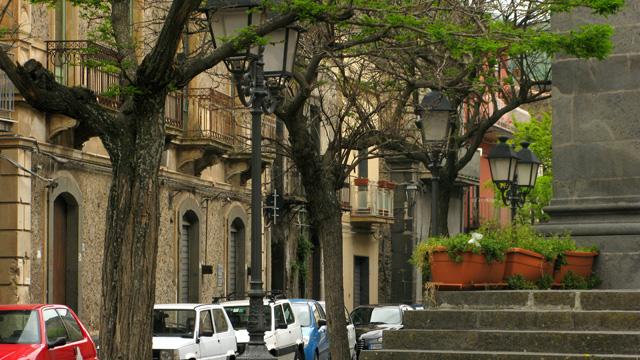
The cafe owner greets us like valued regulars when we go in, rather than just two randoms who’ve blown in from the street along with the volcanic ash. He pours Kate’s tea and brews my coffee, smiling with paternal indulgence all the while. After he brings them to our table he disappears down the street, leaving us to it and returning five minutes later with a box of coffee in his arms. Small-town living: the people up here might be more formal than down in big city Catania, but they’re much more open.
“Go on upstairs. When you get up there, straight ahead of you you’ll see our most valuable item: the Vagliasindi oinochoe. It’s so precious that the Baron Vagliasindi wouldn’t let go of it, even when offered substantial sums of money for it. We’ll leave you to it.”
“He told you this used to be a prison, didn’t he? Well, these were some of the cells. Go on – take a look. I’ll just put the lights on for you and you can head on down whenever you’re ready – the puppets are at the bottom.”
“Oh my god!” Kate’s voice has an edge of hysteria to it. “Get down here, Kate. You have to see this. They’re all staring at me …”
- Watchful
- Kate and the puppets
- The Stare
- Armoured and labelled
- On Guard

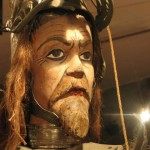
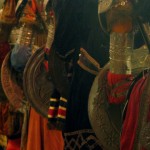
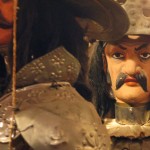
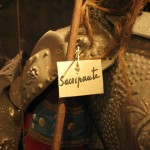
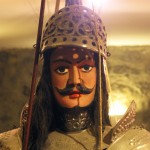






Pingback: Views from a train » Driving Like a Maniac
Pingback: Cantinas and craters » Driving Like a Maniac